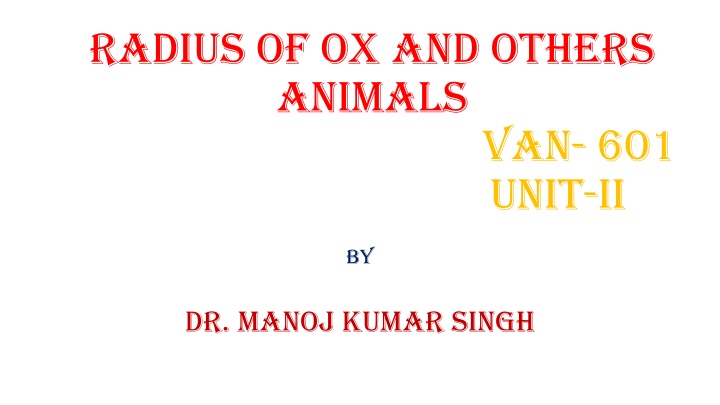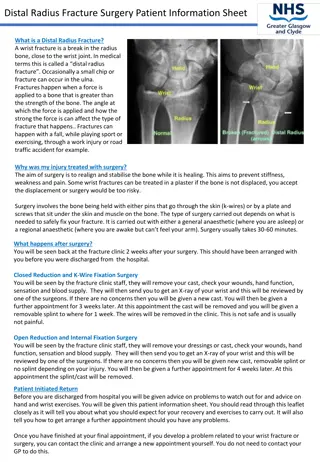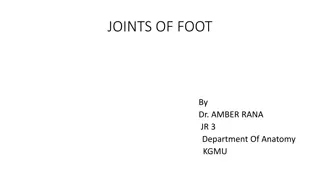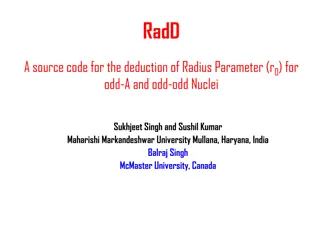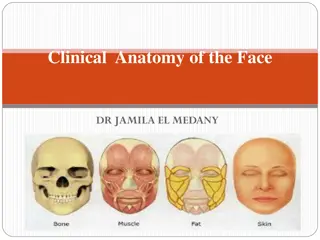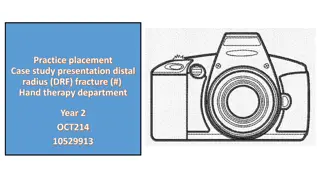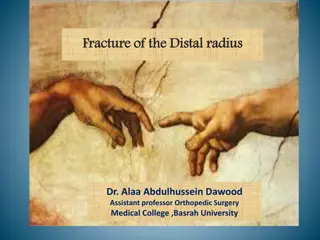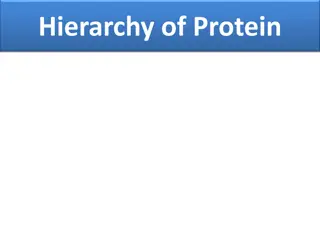Anatomy of the Ox Radius: Structure and Function
The radius of an ox is the larger and shorter bone of the forearm, situated between the elbow and carpal joints. It consists of a shaft with distinct surfaces and borders, facilitating muscle attachments and joint movements in the forelimb. The proximal extremity articulates with the humerus, while the distal extremity presents facets for carpal bone articulation. Understanding the anatomy of the ox radius is crucial for veterinary and comparative anatomy studies.
Download Presentation

Please find below an Image/Link to download the presentation.
The content on the website is provided AS IS for your information and personal use only. It may not be sold, licensed, or shared on other websites without obtaining consent from the author.If you encounter any issues during the download, it is possible that the publisher has removed the file from their server.
You are allowed to download the files provided on this website for personal or commercial use, subject to the condition that they are used lawfully. All files are the property of their respective owners.
The content on the website is provided AS IS for your information and personal use only. It may not be sold, licensed, or shared on other websites without obtaining consent from the author.
E N D
Presentation Transcript
RADIUS OF OX AND OTHERS ANIMALS van- 601 UNIT-II BY DR. MANOJ KUMAR SINGH
Ox The radius or forearm or antebrachium is the larger and shorter of the two bones of the forearm. It is a long bone situated in vertical direction between the elbow joint above and the carpal joint below. It consists of a shaft and two extremities
Shaft It is flattened from before backwards. It has two surfaces and two borders. The dorsal surface is convex in its length, smooth and covered by the extensors of the carpus and digits. The volar surface is concave in its length. It presents along its lateral border a narrow rough area where it is attached with the ulna by interosseous ligament. This rough area is interrupted above and below by two smooth areas which forms the proximal and distal interosseous space. which is for the passage of the interosseous vessels.
The medial border is for the most part subcutaneous presents proximally, a rough area for the brachialis and the medial ligament of the elbow. The lateral border is rounded in its proximal third, wide and flat below and is limited by the radio-ulnar groove. This border gives attachment to the lateral digital extensor and the extensor carpi obliquus.
Proximal extremity It presents an articular area, which is divided by a sagittal groove into two divisions, the medial being the larger. It the humerus and is surrounded by a rim, which carries the coronoid process about the middle of the anterior surface. The coronoid process is received into the coronoid fossa of the humerus during the flexion of the elbow. articulates with the distal extremity of
Posteriorly just below the articular surface are two facets for articulation with the like facets of the ulna and between these and the proximal interosseous space is a quadrilateral rough area to which the ulna is attached. The medial aspect of the anterior surface presents a radial tuberosity into which the biceps brachii is inserted. The lateral tuberosity is more prominent and gives attachment to the lateral extensor of the digit.
Distal extremity It is wide. It presents three oblique facets for the carpal bones ie. radial, intermediate and ulnar carpals from within outward. The facet for the ulnar carpal is partly furnished by the ulna. On the medial and lateral aspects are rough elevations for the collateral ligaments of the carpus.
HORSE Close to the medial border of the volar surface, below the middle is a rough elevation for the radial check ligament. The lateral border presents only one smooth area to form the proximal interosseous space. The radial tuberosity is more prominent. The facets of the distal extremity are less oblique. The lateral surface articulates with the ulnar carpal below and with the accessory carpal behind. PIG It is short, thick and curved posteriorly.
Dog The radius and ulna are relatively long and articulate with each other at their extremities enclosing a narrow interosseous space and permit a certain degree of movement. The proximal extremity of radius is small and bears a concave surface for articulation with the humerus above and a convex marginal area posteriorly for the ulna. The distal extremity is wide and its medial border projects downward forming the styloid process of radius. Laterally there is a concave facet for the ulna.
FOWL The bones of forearm are nearly parallel to humerus. In these two bones the radius is slender while the ulna is thicker and longer. They articulate at their ends and enclose a wide interosseous space. The proximal extremity of the radius presents a concave articular area while the distal extremity is flattened from side to side and articulates with the radial carpal.
